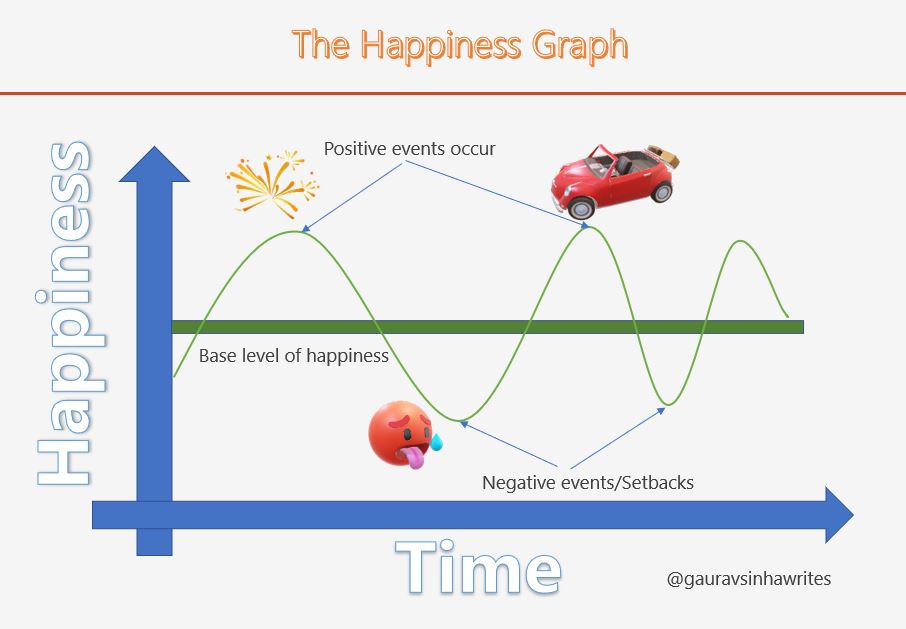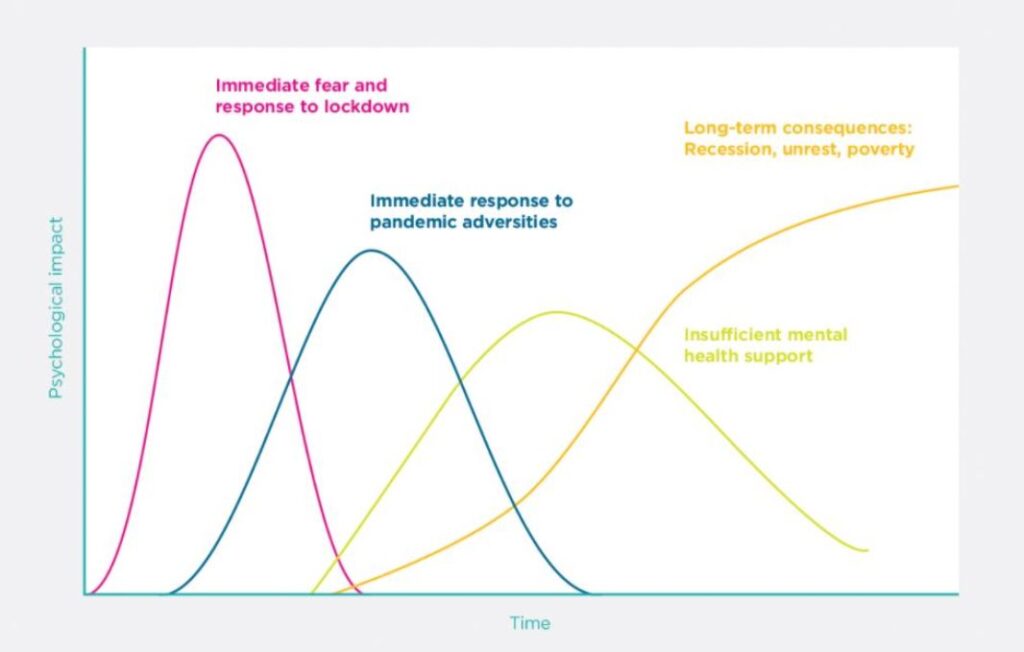Did you know everyone has a different base level of happiness? Let’s understand Hedonic Treadmill and five life lessons about chasing happiness.

The Highway Story
Imagine you start a long journey of 1000 kilometers in your car. You have done the basic checks like fuel, your wallet, cards, a fair idea about the path you want to take, number of significant stoppages’, a night halt in between because you don’t want to drive non-stop and drive yourself crazy. You have a clear vision and like to enjoy the journey; after all, you are a passionate driver, and the journey matters much more than the destination.
On the way, you find many fly-overs suddenly you are above the usual ground level and at a height where there is a free flow of traffic, at times zero traffic, a scenic and clear view. You often find yourself stuck at railway crossings, too much traffic where you are unable to move, there are those constructions roads and unlit underpass where you have to drive carefully and drive is no longer enjoyable.

You have been driving for a while now, so you know that both extremes, the free-flowing highways, and the unlit crowded underpass, are temporary, and soon you will be on your regular highway driving happily listening to your favourite music.
How this story is relevant?
This very common example holds a big secret; The secret of different levels of happiness and how we all have a base level of happiness, and we return to that level after a high or a low. The concept is known as Hedonic Treadmill or Hedonic Adaptations. Hedonic treadmill explains why even after acquiring every kind of wealth available on earth, a person can still be unhappy. On the other hand, a person who may not have enough money for a full day meal can be happier than the billionaire.
According to the concept of Hedonic Treadmill, every human has a standard level of happiness. Depending on life situation, good or bad, we tend to move above or below that average or baseline; Interestingly, we return to the base level much sooner than we think. Remember the long drive; the usual highway is your average level of happiness; drive over a flyover, your happiness increases, you are stuck in underpass traffic, and are no longer happy, even sad or angry. However, both situations are temporary, and soon you are back on the highway, enjoying your favourite song, i.e., your base level of happiness.
What Is the Significance of Hedonic Adaptation?
This concept is an eye-opener in many ways and can save you from making many unwanted decisions and coping well during your temporary hardships. We have a tendency to overestimate anything and everything.

Let’s pause and think about a major loss in your life; it can be anything. How you may have thought that you may not be able to overcome that loss ever, it can be losing someone close, losing a job, leaving your city or country for better prospects, missing out on a lifetime opportunity. An ultra typical example could be your first ever break-up. Life may have become meaningless; you almost felt dead; how sad? I bet you are smiling right now and thinking things worked out pretty well and whatever happened was not as bad as you had made it in your mind when it happened.
The same applies to the other side of the happiness graph, let’s say buying a new car, getting a promotion, buying your favourite jewelry, and so on. You must have thought that you will be super duper happy forever once you get the hard-earned promotion or after buying your favourite car or a glittering diamond set. Bad news, Just after a couple of months, things fall back to normal, and you are back to your usual self, thinking about a costlier car or the next promotion that will be a make or break for you.
Five Life Lessons About Chasing Happiness
How does understating the graph of happiness and how it works helps? Let’s look at the top five lessons.
Avoid Making Decisions on Overestimated Feelings

Accept the emotions as they are positive or negative. The first step towards any kind of improvement or solution starts from acknowledgment. We need to accept our feelings and not overestimate them. If you know sub-consciously that the feelings and situations are temporary, you would not give them too much value and spoil your peace of mind. Don’t think that winning a lottery or becoming a millionaire will keep you happy forever, and similarly, a negative situation doesn’t matter how life-shattering it is, will eventually pass. So let’s not overestimate the feelings; give them their due respect by accepting them as they are and make better decisions.
Keep Moving When the Going Gets Rough (Lower Happiness Graph)

When we are down and out, we think this is the end, and there is no way out. So it’s worth reminding that this phase is temporary, just like everything else, and it will be over soon. There is always a way out, and the best way to move out of any situation is to keep moving. Remember the crowded underpass? The traffic-free, smooth and scenic highway is waiting for you after few kilometers.
Don’t Confuse Materialistic Victories With Long Lasting Happiness (Higher Happiness Graph)

The materialistic way of living has changed our definition and understanding of happiness. Yes, they make us happy, but only for a brief period. In no time, we are back to our base level. So what did we learn? It’s essential to have the right balance between materialistic wealth and actual experiences that give you long-term joy and happiness. When it comes to possessions of things, Less is More. Disagree? Stop reading and revisit your memory bank; try to remember the moments when you really enjoyed it. I’m sure those are not buying a car, but an unplanned road trip, or the first time you saw the ocean or Himalayas, minor incidents like being punished by teachers as a kid, and so on. The list will be endless. Do share what came to your mind in the comments.
Increase the Basic Happiness Level (Stop Hedonic Treadmill)

Instead of focusing on short-term materialistic goals, we need to set meaningful goals by identifying our needs versus wants. Practicing minimalism and mindfulness. Learning to be grateful and staying optimistic are some of the best ways to increase the base level. Ever wondered how few people are always happy no matter what? As soon as they enter the room, there is a positive and happy vibe, and then there are people who are subdued even when they should be dancing in joy. I fall in the second category, always carrying a poker face. Well! not my mistake. My base level of happiness is perhaps at 3 out of 10, whereas the jolly good friend must be at 7 out of 10.
Better Understanding and Focus on Mental Health

Pandemic has had a massive impact on our lives, and there are long-term negative impacts like recession, poverty, and unrest among societies. However, if we look at the positive effects, the pandemic has brought our focus on the ever neglected mental health and well-being. By understanding how happiness works, we can improve our overall mental well-being.

As a country, we are not doing very well (139 out of 149) in World Happiness Report 2021. Happiness and mental well-being is something we should include in our discussions more frequently. As we move into the second wave (or whatever number it is) of pandemic lockdowns. It’s a good time to do a dip check and stay alert. Keep yourself away from consuming or sharing fake news. Invest your time in experiences rather than things.

Feedbacks – Reader’s POV